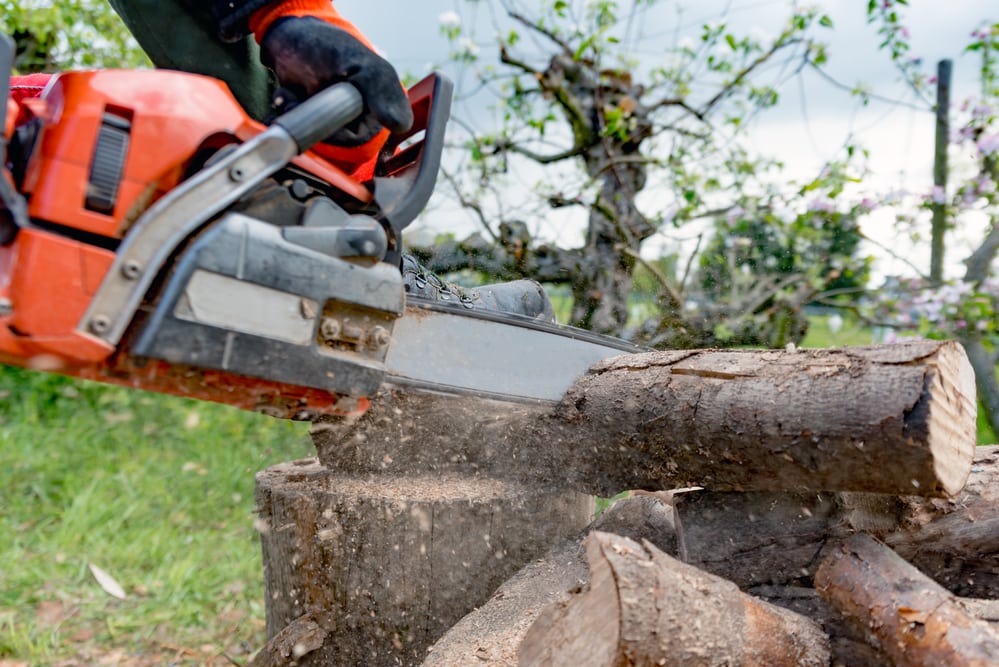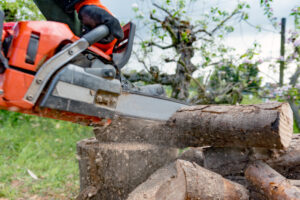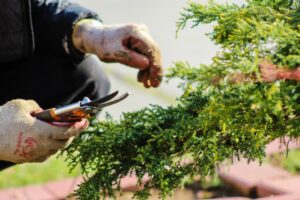The absence of a hedge in a garden is analogous to a summer with no sunshine. A hedge acts as a natural fence, providing solitude and protection from the elements. It also offers birds a protected area. Reading our guide, you may learn the fundamentals of pruning your hedges like a professional.
It would be best if you pruned your hedges on a regular basis so that they continue to thrive and look their best. It may be an issue of basic maintenance or shaping, or it may be a question of moderate to extreme pruning, depending on the state and age of the tree.
No matter what you want, a pair of electric hedge cutters will simplify the job. Choosing the correct teeth spacing for each type of cutting method you intend to experiment with (the distance between the individual teeth on the cutter blade) is important.
Nothing lends a more refined appearance to a property than a line of hedges that have been meticulously trimmed. Your home's comfort and appeal to potential buyers can benefit from adding this uncomplicated feature to your landscape.
If you employ a professional to take care of the maintenance of your hedges, you won't have to worry about the task being challenging or time-consuming at all. However, regular hedge trimming is essential to maintaining the health of your hedges because overgrown hedges quickly become an eyesore if they are not maintained.
What are the benefits of having hedges on your property, and how do you take care of them once they are there?
How to maintain and trim your hedge?
It is important to start pruning new hedges as soon as they are planted to create the desired form and to prevent unhealthy, unwieldy development. The kind of hedge you have will determine how much you cut it back.
It would help if you began to shape the hedge as soon as it is practicable to do so. A formal hedge, whether new or already grown, should be tapered so that it is wider at the bottom than at the top. This ensures that the lower half will get the sunshine it needs for healthy growth.
After planting the hedge, it will require routine maintenance to remain healthy and well-kept. If you have enough experience, you should be able to cut a hedge simply by looking at it, but it is a good idea to establish your lines with lengths of thread that are pulled taut between the canes. If you want to fix a formal hedge that has gotten out of shape, the only solution is usually to chop it back severely. However, remember that this approach is inappropriate for all animals. When you cut into older wood, conifers, in particular, have a negative reaction.
Seasons for cutting hedges and how often to cut them depending on the species, but as a general guideline, formal evergreens like box or privet should be pruned two to three times a year throughout the growing season (from May to September), while some quick conifers, such leylandii, may require pruning more regularly to keep them under control. After the end of August, you should not trim any conifers. Late in the month of August is the best time to trim dense deciduous hedges such as beech or hornbeam. However, if more extensive work needs to be done, it is best to wait until late February, when the plant is still asleep.
Always remember that it is essential not to trim too early in the year to prevent upsetting birds that have begun to nest in the area.
When to cut hedges?
Hedge trimming can be done at any time; however, it is recommended that you do it when the hedges actually require it. Try trimming your formal hedges at least twice a year: once in the spring or summer and then once more in the fall to get them ready for the coming winter.
Maintaining the informal hedges as frequently will be optional, but you should still clean them up in August or July.
Light pruning
A non-deciduous (evergreen) hedge should have mild pruning done on it once a year, preferably between the months of May and August. Hedgerows, composed of deciduous plants, need to have their foliage trimmed at least two times a year, once in the spring and once in the late summer or early fall.
It is in your best interest to put off performing the second trim until after the main bud break, which is the time when the newly formed buds are fully established, and the hedge is growing less. This will ensure that the cut stays fresh for a bit longer.
Work that needs to be trimmed is best done on days that are frost-free, cloudy, and dry; the shoots could be harmed by intense, direct sunshine.
Because you will only be cutting young branches that are rather thin, a pair of cutters with small tooth spacing is all that is required for contouring and moderate pruning. A motorised secateur, on the other hand, will enable you to selectively prune individual branches of a hedge with a minimum of effort.
In order to guarantee that all areas of the hedge receive an adequate amount of light, you should ideally trim your hedge into the shape of a trapezoid. This means that the lowest branches should be larger than the top ones. Then, you can make a straight cut across the newly formed shoots that is approximately 10–15 cm long. You may use a piece of rope as a guide to ensure the hedge doesn't turn out crooked when trimming it.
Moderate pruning
When performing this kind of trimming, you need to ensure that the teeth spacing on your cutters is more than the thickness of the branches you're working on. It is advisable to work on frost-free days and prune the fruit-bearing branches so that as much as two-thirds of their length is removed. You can get rid of the rival shoots that are growing on the branches this way, allowing them to produce buds more successfully in the future.
You should prune 3/4 of the shoot tips off of hedge plants that originate from trees in the first year. Examples of such plants include the field maple and the hornbeam. Because of this, the branches will be able to spread more broadly and densely, which will result in a more substantial hedge.
Hard pruning
There are times when older hedges require more drastic pruning to return them to their former splendour and fill in any gaps. Winter days without frost are ideal for the kind of labour involved here.
We recommend that you use cutters with a powerful motor and broad tooth spacing. If you cut the branches back to where they join the trunk, they will produce new growth that is denser in the following spring.
How to trim tall and overgrown hedges
We suggest beginning your job at the bottom of the hedge and working up to the top of the plant. Hedge tops that are up to 10 feet in height should be levelled off. You have complete command over the peak of the hedge thanks to the head's ability to rotate through 135 degrees. The precise blade on the trimmer can slice through up to 15 mm thick stems.
Helpful hedge-trimming tips
1. Use the Right Tools For the Job
In the past, gas-powered trimmers were considered to be the superior choice for large-scale trimming projects. In the meantime, contemporary solutions that are powered by electricity or batteries can be just as effective without requiring constant refuelling. When deciding which style would serve you best, it is important to consider the dimensions of your yard and the density of the shrubbery there.
Look for a trimmer with safety measures, such as a trigger with an automatic shut-off that stops the blade when removed. This is important no matter which option you choose. In addition, you will require a lock to keep the trimmers from being switched on inadvertently, as well as front handle protection.
If you have a substantial quantity of landscaping or really high hedges, consider acquiring additional rechargeable batteries or extension poles to make your work more manageable.
When you are cutting your hedges, you should always make sure to safeguard yourself by using protective equipment. Gloves, shoes with closed toes, long pants, long sleeves, and glasses to protect your eyes are some of the items that make up protective gear.
If you have the appropriate equipment, pruning your hedges will be less dangerous and easier.
2. Keep Hedges Thick and Dense
Always maintain a thick and dense growth for your hedges. Your hedge will lose not only its purpose but also its character if it grows in a manner that is sparse and spindly.
Your property will experience improvement as a result of the following:
- Protecting one from damaging UV rays
- Insulating oneself from the sounds of passing cars and nearby neighbours
- Providing your yard with some much-needed shade
- Providing privacy
- Providing shelter for your house from potentially destructive winds
Don't worry about it; frequent trimming will help your hedges get fuller, even if they are now sparse and thin.

3. Trim Regularly to Promote Growth and Health
The routine cutting of your hedges is necessary to ensure that they remain in good health and keep them looking tidy. Hedgerows that aren't maintained properly can become fragile and more susceptible to disease. By performing routine maintenance on your hedge consistently throughout the year, you may maintain the form you like while encouraging healthy development.
The kind of hedge you possess and how fast it grows will determine how often you will need to trim it. However, it would be best if you made it a goal to give your hedges a significant haircut at least once a year. In order to maintain their form, keep a clean appearance, and keep their length within acceptable boundaries, hedges often require work pruning every four to six weeks throughout the entire year.
In an ideal scenario, you should perform extensive trimming either early in the spring or late in the fall. During these times, there is less of a chance of extreme heat or cold, and your hedge will have ceased growing for the period. Your hedges will continue to look neat and well maintained if you do this, which will help to promote healthy development. In your best interest, refrain from cutting your hedges when the weather is uncomfortably hot or cold because this might be stressful for the plants. Also, do your best to prevent doing this when it is raining outside because it will make the process much messier and more difficult to complete.
4. Watch Out for Pests and Diseases
Maintaining the hedge's health is essential if you want to stop unwanted visitors like insects and diseases from damaging it. So, in addition to giving it routine haircuts, you should also fertilise it consistently, remove any unhealthy growth, and pay particular care to the soil. If you give your hedge the attention and care it needs, it will be able to ward off diseases and insects.
The types of illnesses that can affect your hedge will vary greatly depending on the kind of plant that it is; nevertheless, the following are some of the most prevalent diseases that can affect hedges:
- Powdery mildew is a grey powdery fungal covering that can appear on plants if they are allowed to become too dry or if they do not have adequate air circulation.
- The disease known as box blight is brought on by two distinct types of fungi, both of which originate from dead leaves that have been allowed to remain for an excessive amount of time beneath shrubs.
- Hedge plants can develop golden foliage if they are subjected to severe weather shifts, windburn, malnutrition, or root disease. Unfortunately, these factors can also cause the plants to die.
Your hedge may recover from most of these diseases with a little bit of extra attention and care, but ignoring the condition will make it much more difficult for your plants to get better. None of these diseases is an immediate death sentence for your hedge.
5. Get Hedge Trimming from Warner Tree Service
Gardening is a pleasure for some individuals and those who like spending hours trimming their hedges. However, others need help finding the time between their jobs and their responsibilities to their families. Consider working with a professional hedge trimming service if this is a task that you either need to look forward to or are unable to complete promptly on your own.
In the long run, you will be better off in terms of effort, time, energy, and money if you hire tree trimmers. This is especially the case if your hedge is vast and intricate, as doing so will need significant work and specialised knowledge. Hiring a skilled hedge trimmer will guarantee that your hedge is trimmed and shaped correctly to promote healthy development and thickening. This may be accomplished by ensuring that the hedge is properly trimmed. It will also save you a significant amount of time and effort, which is equivalent to several hours' worth of work, which you would otherwise have to put into pruning.
Ensure that your hedges receive the gentle, loving care that is necessary for their healthy growth. In addition to these services, we also provide tree maintenance, stump grinding, storm cleanup, and tree removal.
6. Don’t let your hedge get top heavy
One factor that should be considered is whether the top of the hedge is getting wider than the bottom, which would cause it to become top-heavy. If this is the case, you may have noticed that the lower portion of the hedge is starting to thin out a bit, exposing the branch structure. This is because the hedge is preparing to shed its leaves.
This is because there is a reduction in the amount of sunlight that reaches the bottom of the shrub. To offset this, you should cut more from the peak of the hedge, making the bottom broader in the process. This will allow more light to reach the lower regions, which in turn will encourage more growth in these places, making the hedge fuller. This method only applies to coniferous hedges but is quite effective when used to broadleaf hedges. It can also be used on non-coniferous hedges that have been neglected for years, but its applications are restricted to coniferous hedges.
7. Choose the right technic for your hedge
Trimming a classic boundary hedge
The primary functions of a traditional hedge are to restrict the perimeter of your yard and to obscure the view of your garden. This particular variety of hedges serves a purpose that is comparable to that of a plant wall or a fence. They are typically composed of evergreen plants that retain their leaves throughout the year and include things like cypress, laurel, and conifers.
These hedges take on the traditional form of a linear and rectangular rectangle. Despite this, it could be a smart option to chamfer the edges of your hedge, which means cutting them at an angle, to account for the more rapid growth that will occur in these areas.
A rounded cut can be provided to conifers even if the margins are still at an angle. For example, you can give the peak of the hedge a very small slope, or you can prune it so that it is exactly horizontal; the second choice results in a more uniform appearance.
Trimming a windbreak hedge
The installation of windbreak hedges serves the purpose of creating a physical barrier against the effects of the weather. Generally, less overcrowded or rural locations are where you'll find the most demand for this sort of hedge. These hedges may be made of evergreen or deciduous plants and should not be so dense as to obstruct wind flow completely.
In this situation, the objective of pruning should be to bring each plant into a state of equilibrium. This can be accomplished by ensuring that each plant's branches are around the same length. This will encourage the growth of your trees and prevent the branches from crossing over one another excessively. Therefore, it is in your best interest to work towards keeping the original shape of the plants while at the same time striving to make your hedge as uniform as is humanly possible.
Trimming an ornamental mixed hedge
Different kinds of shrubs can be used to create different kinds of ornamental hedges. The primary purpose of these hedges is to provide beauty, but they will also protect your privacy. These hedges can serve as a true main point in a beautiful garden because they offer a range of characteristics, including colours, forms, leaf and bark varieties, fruits, and even smells.
Therefore, it should go without saying that when you trim your hedges, you should do so with design in mind. When you are pruning the shrub, you should, nevertheless, make an effort to use the natural appearance of the shrub as a guide. This will typically result in you ending up with rounded edges rather than a shape that is rectangular after it is all said and done.

Border hedge trimming
Hedge plantings along a property line can perform some functions, including delineating the limits of a vegetable garden or flower bed, drawing attention to a particular region of the garden, hiding a wall, and other similar tasks. Informal and formal border hedges are the two most common forms of border hedges.
In most cases, just one type of plant makes up a formal border hedge, and its height is limited to no more than one, however, a metre. A border hedge that is not formal may consist of various plant species and range in height from one to two metres.
Because these hedges will be placed within your landscape, the design options are practically endless! Let your imagination run wild when it comes to the uses for these hedges, which include using them to create a little walkway, bordering potted plants or vegetable gardens, or both. Particularly low hedges can be trimmed into any number of forms, including rectangles, trapezoids, circles, or even a totally random design.
Pick a form that complements your aesthetic and ensure you utilise the appropriate tools to achieve the desired outcomes. For example, in light of the preceding, if you have a variety of shrubs, you should prune your hedges to conform to the plant's natural form.
Formative pruning of a hedge
Formative pruning is something that should be done to hedges until they reach the height and width that you want them to be. It is advisable to keep the hedge from getting tall or large for several reasons: first, you will want to prevent the woody development inside the hedge from taking over; and second, to prevent trimming the hedge from becoming a genuine chore.
When you prune your hedge before it reaches its desired height and width, you should focus on softly contouring the sides rather than addressing the top. Again, working with a conifer is of utmost importance because severing the main branch will result in substantial delays in the plant's ability to produce new growth.
Final Words
The tips offered in this article are meant to act as general guidelines that will help you keep your bushes and hedges healthy, keep them well-groomed, and allow them to grow into the form you want.
Before you trim your shrubs or hedges, it is recommended that you check with a tree care professional or another expert to learn the most successful approach to care for your particular plants. Also, check up on your hedges consistently because, based on their age and the kind, certain types may require less frequent or more frequent pruning than others.
For example, in the early spring, evergreen tree branches need to be clipped. They mature slowly, and if they are trimmed too late in the season, it may give the impression that the branches have been removed entirely from the plant. It is advisable to wait to prune blooming shrubs until after their blooms have died and become brown. This gives you the best chance of success.
You have to keep in mind that you need to consider all of these aspects if you want to develop the garden of your dreams.
Frequently Asked Questions
What should I do if I encounter large or overgrown branches while trimming?
When you encounter large or overgrown branches while trimming, it's best to use loppers or a pruning saw. These tools will provide the leverage and cutting power needed to safely remove thicker branches. Start by making an undercut a few inches away from the trunk or main branch, then make a top cut slightly further out, allowing the branch to fall without tearing the bark. Always prioritize safety and take your time when dealing with larger branches to avoid accidents.
How can I create a more natural-looking hedge?
If you prefer a more natural-looking hedge, consider these tips:
- Avoid trimming the sides of the hedge to be perfectly straight, allowing for some gentle curves and variations.
- Instead of creating a flat and level top, opt for a slightly undulating shape that mimics the growth patterns found in nature.
- Leave some gaps or spaces between branches to allow light to penetrate and encourage healthy growth throughout the hedge.
How can I maintain the health of my hedge while trimming?
To maintain the health of your hedge while trimming, it's important to follow these practices:
- Use sharp, clean trimming tools to make precise cuts that promote quick healing.
- Avoid trimming during extreme weather conditions, such as extreme heat or cold.
- Regularly inspect the hedge for signs of pests or diseases and take appropriate measures to address them promptly.
- Provide adequate watering and fertilization to support the hedge's growth and recovery after trimming.
Can I trim my hedge to a specific height?
Yes, you can trim your hedge to a specific height, but it's essential to consider the growth habit of the hedge species. Some hedges, like Leyland cypress, can tolerate drastic height reductions, while others may not respond well to severe pruning. It's generally recommended to trim hedges to a height that allows sunlight to reach the lower branches, promoting overall health and dense growth.
How do I clean up the hedge trimmings after trimming?
After trimming your hedge, it's important to clean up the trimmings to maintain a tidy appearance and prevent the spread of pests and diseases. Here are some cleanup tips:
- Use a rake or broom to gather the trimmings into piles.
- Dispose of the trimmings in a garden waste bin, compost pile, or as per your local regulations.
- Inspect the trimmed area for any remaining debris or fallen branches and remove them accordingly.
- Clean and store your trimming tools properly to keep them in good condition for future use.







